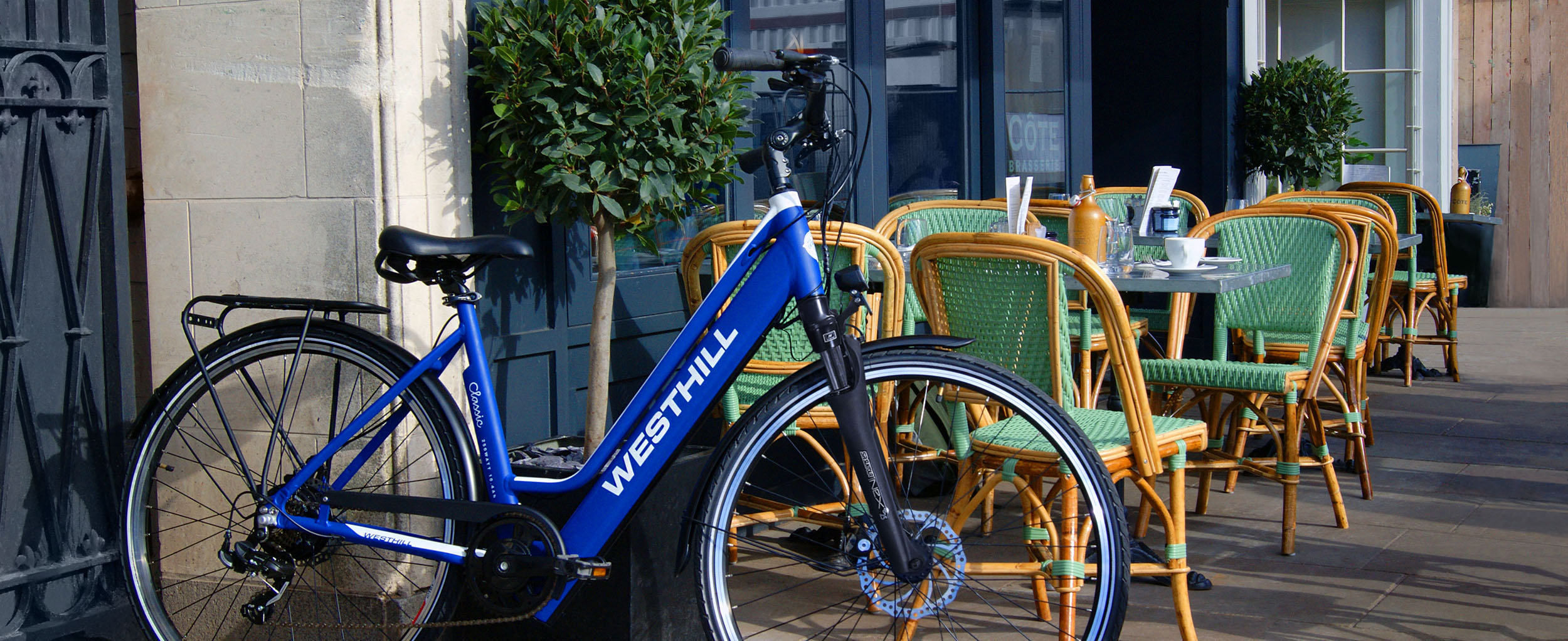
How do I work the bike?
- Turn the control panel on.
- Select the level of assistance you require. We recommend you start on the low setting and build up speed slowly. Level 0 will not use pedal assist.
- Start pedalling and after a couple of seconds the motor will kick in to add to the power from your legs.
How do I stop?
There are both front and rear brakes which will slow the bike down. When either the brakes are pressed or the pedals stop turning the electric motor will automatically stop allowing you to come to a halt.
How fast does it go?
All electric bikes for road use in the UK are limited to 15.5mph or 25kph. If you go any faster the motor will simply cut out, it will not automatically brake or slow you down. You can go faster by pedalling or by going downhill, just make sure you are always fully in control and keep your hands on the brakes.
How far can it go?
Depending on the model, the battery’s range per charge reaches between 30-100 miles. Distance is dependent on many conditions (which you can see below). The battery will last for longer the more effort you put into pedalling and by having a low level of assistance. Maximum travel distance on a fully charged battery is measured at a condition of 20°C, no wind, flat road, total bike weight 75kg, and 25km/h speed. This will vary according to load, road conditions, wind direction, temperature, braking and restarts, tyre pressure and prompt battery charging. To obtain the maximum travel distance, we suggest you check all factors within your control, including overloading, driving style, tyre pressure and timely battery charging.
Does pedalling charge the battery?
No, although pedalling harder will extend the distance the battery will last for.
Do I need a licence / road tax / MOT?
You do not need any of these things for an electric bike. They are treated the same as a normal push bike, which is why they are such an ideal alternative to using a car/motorbike.
Are Westhill Bikes road legal?
Yes, they are. The main criteria for electric bikes are that they are not over 250 watt and that their speed is limited to 15.5mph (25kph). They must also have sensors which cut off the power when the brakes are applied and comply to normal cycling legislations.
How much maintenance will an electric bike need?
The maintenance of an electric bike is very similar to a regular bike including:
- Keeping the tyres at the correct pressure
- Checking brakes regularly for wear and tear
- Keep the chain lightly oiled
- Keep the gears lubricated and ensure they are free of dirt
It is important to keep the bike running smoothly as anything which slows the bike down (such as deflated tyres or dirt in the gears) will put added pressure on the battery, meaning you will need to charge it more often and won’t go as far on a single charge.
[box type=”info” style=”rounded”]Remember that electric components don’t like water so make sure you don’t use a pressure washer on the bike, don’t submerse the bike in water, and take a little time to dry the bike after a wet ride or wash. Store it in a clean, dry area.[/box]
Do I need to insure my bike?
You do not need insurance to ride your bike anywhere. However you may want to make sure it is covered against theft. Check with your home insurance provider to see if it would cover the cost of your bike, you may need separate insurances.
Can I use it as a normal bike?
Yes you can. Just turn the assistance off and it becomes just a normal bike. This is ideal for if you want to commute on a bike but don’t want to arrive at work hot, sweaty and tired. You can glide to work and then build up a good sweat on the way home.
Is it noisy?
The motor on an electric bike is virtually silent so the bike will make about as much noise as a regular bike would.
Have a question we haven’t answered yet? Fill out the form below and we will get right back to you.